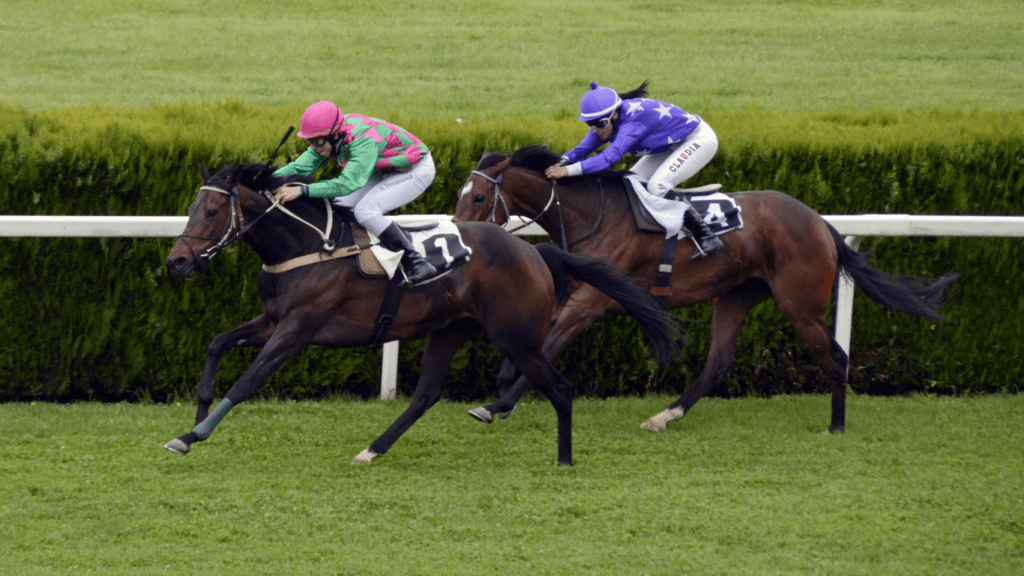Understanding Seasonal Trends in Horse Racing
Different seasons affect horse racing performance, making it essential to adapt betting strategies to maximize success.
Spring Racing Strategies
Spring marks the beginning of the racing season. Horses returning from a break may not be in peak condition, so looking for those with recent runs or solid training performances is key. Pay attention to track conditions since spring weather can be unpredictable. Favor horses that perform well on wet or soft ground if rain is expected.
Summer Racing Tactics
Summer often features high-profile races and well-maintained tracks. Horses are generally in full fitness by this time. Study past performances in summer races to identify consistent performers. Weather conditions are more stable, so track conditions are less variable. Target horses with strong records on firm ground and consider form over recent races as a primary criterion.
Fall Betting Advantages
Fall racing comes with cooler weather and preparation for major end-of-year events. Look for horses that perform well in cooler temperatures. Pay attention to trainers who target fall races specifically. The changing weather can lead to different track conditions, so adjust based on whether the ground is firm or starting to get softer.
Winter Racing Insights
Winter racing is less frequent but crucial for year-round bettors. Cold weather affects horses differently. Focus on horses with proven winter performance. Track conditions vary widely, often leaning towards heavier ground. Bet on horses with a history of handling soft to heavy tracks. Indoor tracks may also come into play, favoring specialists on artificial surfaces.
Analyzing Track Conditions Through the Seasons
Track conditions change throughout the seasons, impacting horse performance and race outcomes. Knowing how to analyze these conditions helps build effective betting strategies.
Turf Tracks vs. Dirt Tracks
Turf tracks, made of grass, suit horses with speed and agility. Dirt tracks, with a firmer surface, favor stamina and strength. Turf tracks can become slippery in rain, affecting horses’ footing. Dirt tracks, however, tend to be more consistent regardless of weather.
Check race history on different surfaces. Horses often show distinct preferences, excelling on one type but not the other. In summer, turf tracks are usually firmer, enhancing speed. In contrast, dirt tracks maintain consistency throughout the year, offering predictability.
Impact of Weather on Race Outcomes
Weather conditions directly influence track surfaces. Rain softens turf tracks, creating a slower, more challenging race. Dry spells harden surfaces, benefiting speed. Wind also affects races by either aiding or hindering horses, depending on its direction.
Consider long-range forecasts for seasonal betting. In spring, unpredictable weather can quickly alter track conditions. Summer generally provides stable track conditions, but occasionally heavy rainfall changes things dramatically. Fall brings variable weather, making adaptability key. Winter weather, often harsher, results in heavier tracks that test endurance more than speed.
Identifying Key Horses and Jockeys

To improve betting success, it’s essential to focus on key horses and jockeys. Evaluating their seasonal performance trends and recognizing notable trainers can significantly enhance your strategy.
Seasonal Performance Trends
Key horses often display specific performance patterns aligned with seasons. Horses that excel on firm ground typically perform better in summer, as track conditions are favorable. For example, one horse might consistently win on turf during this season. Conversely, horses showing strength in muddy or soft conditions, like those thriving in winter, often excel when the track is impacted by rain or snow. Analyzing these trends helps in predicting outcomes based on historical data, further refining your betting strategy.
Notable Trainers to Watch
Identify trainers with a history of grooming successful horses for seasonal races. The trainer’s strategy directly impacts the horse’s performance. Track records often highlight trainers who repeatedly achieve notable finishes during specific seasons. Whether it’s a trainer renowned for summer victories or one who excels in winter, knowing these figures can guide betting choices. For instance, a trainer with multiple wins in seasonal stakes races often brings out the best in their horses, offering a better foundation for betting decisions.
Effective Betting Techniques
Mastering effective betting techniques can significantly improve your horse racing betting success. This section delves into methods to optimize your wagers and manage your bankroll prudently.
Exotic Wagers
Exotic wagers, including:
- exactas
- trifectas
- superfectas
offer higher payouts compared to straight bets. Exactas require selecting the first two finishers in the correct order. To increase chances, I often box exactas, which allows any order of the selected horses to finish in the top two.
Trifectas demand predicting the first three finishers in order. For a higher probability of winning, I use trifecta boxes and key trifectas. A trifecta box includes all possible orders of chosen horses. Key trifectas hinge on one horse finishing in a specified position, with the others filling the remaining spots.
Superfectas, the most challenging, involve selecting the top four finishers in sequence. Superfecta boxes offer flexibility by covering multiple combinations. Although expensive, these options balance risk and reward.
Bankroll Management
Effective bankroll management is essential for long-term success. I allocate a specific portion of my bankroll for each bet to avoid excessive loss. Typically, I use around 1-2% for single bets and up to 5% for confident plays.
Tracking all bets rigorously helps identify patterns and refine strategies. I keep records of winning and losing bets, types of wagers, and conditions of races to adjust future bets based on prior outcomes.
I use a tiered bankroll system to manage risk. This approach categorizes funds into different tiers for low, moderate, and high-risk bets. By allocating more funds to higher confidence bets and fewer to speculative ones, I diversify my betting portfolio and minimize potential losses.
Bankroll management ensures consistent participation in horse racing betting, making it easier to navigate the ups and downs of the sport.
Tools and Resources for Seasonal Betting
Identifying the right tools and resources can elevate your horse racing betting strategy. Leveraging these tools ensures you make informed decisions based on data and trends.
Data Analysis Tools
Effective data analysis tools enable bettors to parse historical data and current statistics. I recommend using platforms like Timeform or DRF (Daily Racing Form) for comprehensive race analyses. These platforms provide detailed horse performance stats, trainer and jockey records, and various critical metrics. Opt for tools that offer customizable analytics and predictive models to tailor insights to seasonal trends.
Online Betting Platforms
- Choosing a reliable online betting platform enhances your betting experience.
- Find platforms like TwinSpires and BetAmerica offer advanced betting interfaces, real-time updates, and a variety of wagering options.
- These platforms often feature educational resources and expert picks, helping you make well-informed bets.
- Ensure the platform supports secure transactions and provides mobile access for betting on the go.
- Leveraging these tools and resources allows for a strategic approach to horse race betting, maximizing your chances of success across different seasons.





